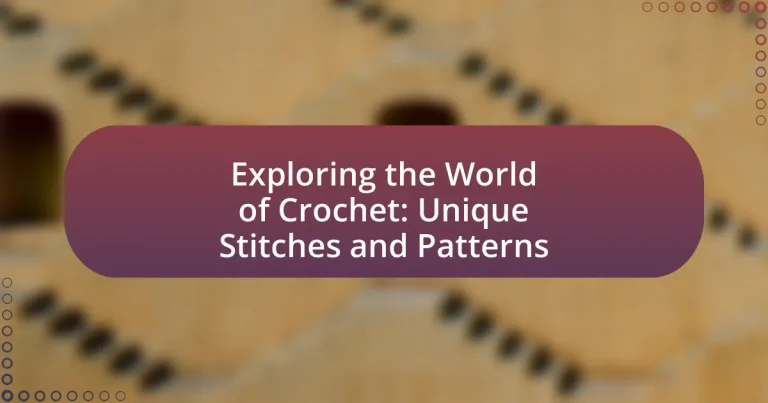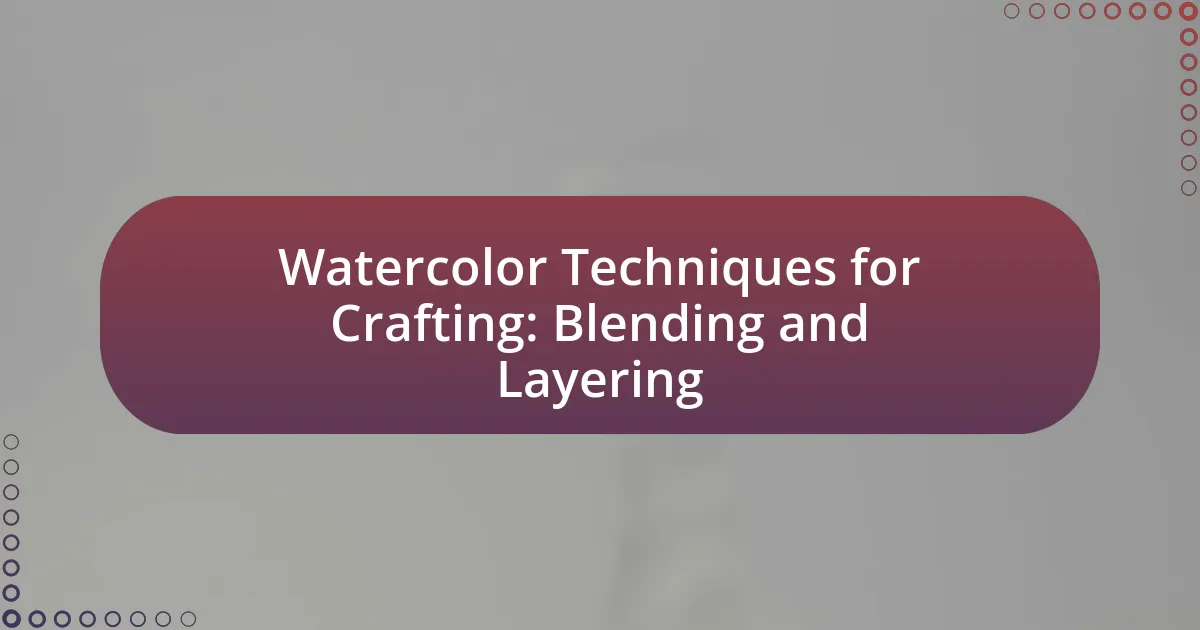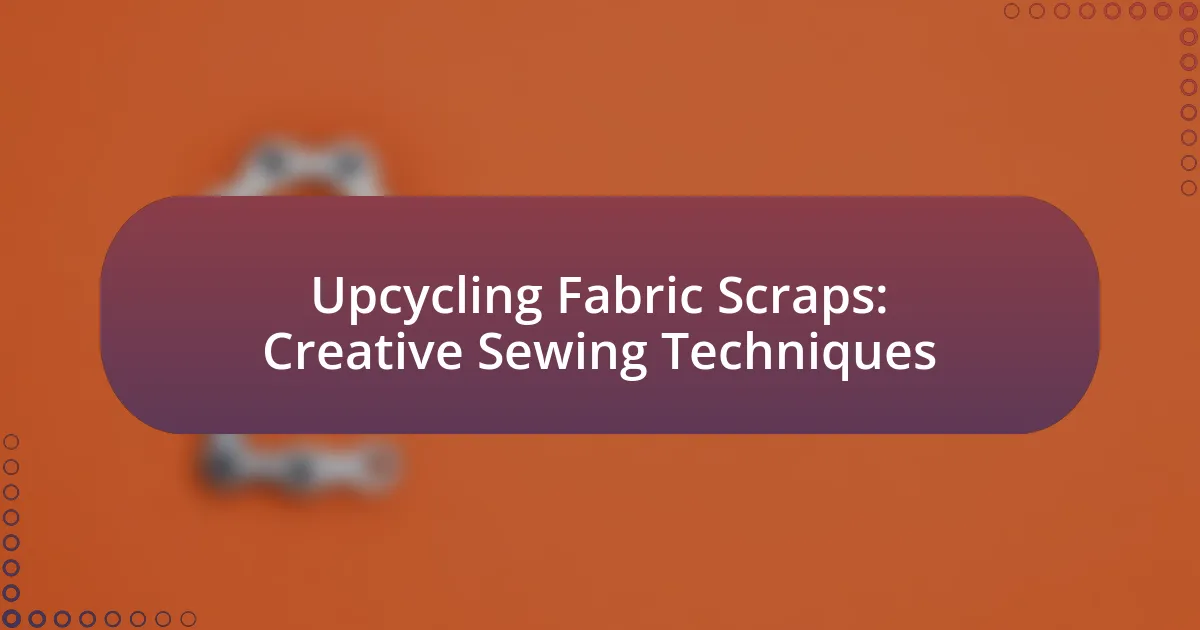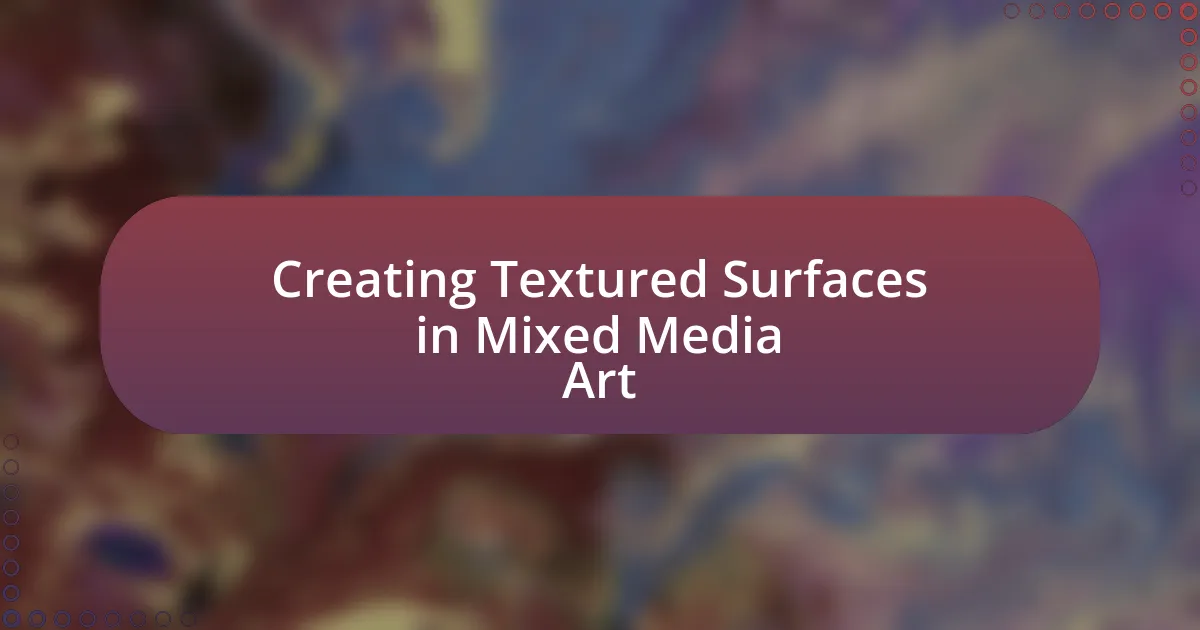Crochet is a textile art that involves creating fabric by interlocking loops of yarn with a hooked needle, gaining popularity due to its accessibility and versatility. The article explores the origins and evolution of crochet, highlighting its historical influences and cultural perceptions. It discusses essential tools and materials, the benefits of learning crochet, and the significance of unique stitches and patterns in enhancing projects. Additionally, it provides insights into the complexity of crochet patterns, resources for discovering new designs, and tips for mastering techniques while avoiding common mistakes.

What is Crochet and Why is it Popular?
Crochet is a textile art that involves creating fabric by interlocking loops of yarn using a hooked needle. Its popularity stems from its accessibility, versatility, and the ability to create a wide range of items, from clothing to home decor. According to a survey by the Craft Yarn Council, approximately 38 million people in the United States engage in crochet, highlighting its widespread appeal. The craft allows for personal expression through unique stitches and patterns, making it a favored hobby among crafters of all skill levels.
How did crochet originate and evolve over time?
Crochet originated in the early 19th century, evolving from techniques used in lace-making and embroidery. The term “crochet” comes from the French word “crochet,” meaning “hook,” which refers to the tool used in this craft. Initially, crochet was primarily a method for creating lace and decorative items, often made from fine threads. Over time, it expanded into a popular craft for making garments, home decor, and accessories, particularly during the Victorian era when it gained widespread popularity in Europe and America. The introduction of synthetic yarns in the 20th century further diversified crochet, allowing for a broader range of colors and textures, thus enhancing its appeal and accessibility to a wider audience.
What historical influences shaped the development of crochet?
The development of crochet was shaped by various historical influences, including the evolution of textile techniques in Europe during the 19th century. Crochet emerged as a distinct craft around the 1800s, influenced by earlier needlework practices such as lace-making and embroidery. The introduction of the crochet hook, which allowed for more intricate designs, played a significant role in its popularity. Additionally, the Industrial Revolution facilitated the mass production of yarn and patterns, making crochet accessible to a broader audience. The combination of these factors contributed to crochet’s establishment as a popular and enduring craft.
How has crochet been perceived in different cultures?
Crochet has been perceived as both a practical craft and an artistic expression across various cultures. In Europe, particularly in countries like Ireland and France, crochet has historical roots in creating intricate lacework, often associated with traditional garments and decorative items. In Latin America, crochet is celebrated for its vibrant colors and patterns, often used in folk art and community projects, reflecting cultural identity and heritage. In African cultures, crochet serves as a means of economic empowerment, with women using the craft to create goods for sale, thus fostering community development. These diverse perceptions highlight crochet’s multifaceted role in cultural expression, economic activity, and artistic creativity.
What are the basic tools and materials needed for crochet?
The basic tools and materials needed for crochet include a crochet hook, yarn, and scissors. A crochet hook, typically made of metal, plastic, or wood, is essential for manipulating the yarn to create stitches. Yarn, available in various fibers such as cotton, wool, or acrylic, serves as the primary material for crochet projects. Scissors are necessary for cutting the yarn when finishing a project or changing colors. These items are fundamental for anyone starting in crochet, as they enable the creation of various patterns and stitches.
What types of yarn are best for beginners?
Acrylic yarn is the best type of yarn for beginners due to its affordability, availability, and ease of use. Acrylic yarn is widely accessible in various colors and weights, making it suitable for a range of projects. Additionally, it is durable and machine washable, which simplifies maintenance for novice crafters. The smooth texture of acrylic yarn allows for easy stitching, reducing the likelihood of frustration while learning new techniques. These characteristics make acrylic yarn an ideal choice for those just starting their crochet journey.
How do different crochet hooks affect the crafting process?
Different crochet hooks significantly affect the crafting process by influencing the tension, speed, and comfort of crocheting. The size and material of the hook determine how easily yarn slides off the hook, which can alter the overall tension of the stitches. For instance, a larger hook creates looser stitches, while a smaller hook results in tighter stitches, impacting the final appearance of the project. Additionally, ergonomic hooks can reduce hand fatigue, allowing for longer crafting sessions, while metal hooks may provide a faster glide for certain yarn types. Studies have shown that the choice of hook can lead to variations in stitch consistency and project completion time, highlighting the importance of selecting the right hook for specific yarn and patterns.
What are the benefits of learning crochet?
Learning crochet offers numerous benefits, including enhanced creativity, improved fine motor skills, and stress relief. Engaging in crochet stimulates the brain, promoting cognitive function and problem-solving abilities as individuals create intricate patterns and designs. Additionally, studies have shown that repetitive activities like crochet can reduce anxiety and promote relaxation, contributing to overall mental well-being. Furthermore, crochet fosters a sense of community, as individuals often share their projects and techniques, leading to social connections and support networks.
How does crochet contribute to mental well-being?
Crochet contributes to mental well-being by promoting relaxation and reducing stress. Engaging in crochet allows individuals to focus on repetitive motions, which can induce a meditative state, leading to decreased anxiety levels. Research published in the Journal of Neuropsychiatry and Clinical Neurosciences indicates that activities like crochet can enhance mood and provide a sense of accomplishment, as completing a project fosters feelings of satisfaction and boosts self-esteem. Additionally, the tactile nature of yarn and the creative expression involved in crochet can further enhance emotional resilience and overall mental health.
What practical skills can be developed through crochet?
Crochet develops several practical skills, including fine motor skills, pattern recognition, and problem-solving abilities. Engaging in crochet requires precise hand movements, which enhance dexterity and coordination. Additionally, following crochet patterns fosters pattern recognition and critical thinking, as individuals must interpret instructions and visualize the final product. Research indicates that crafting activities like crochet can improve cognitive function and mental well-being, further supporting the development of these skills.
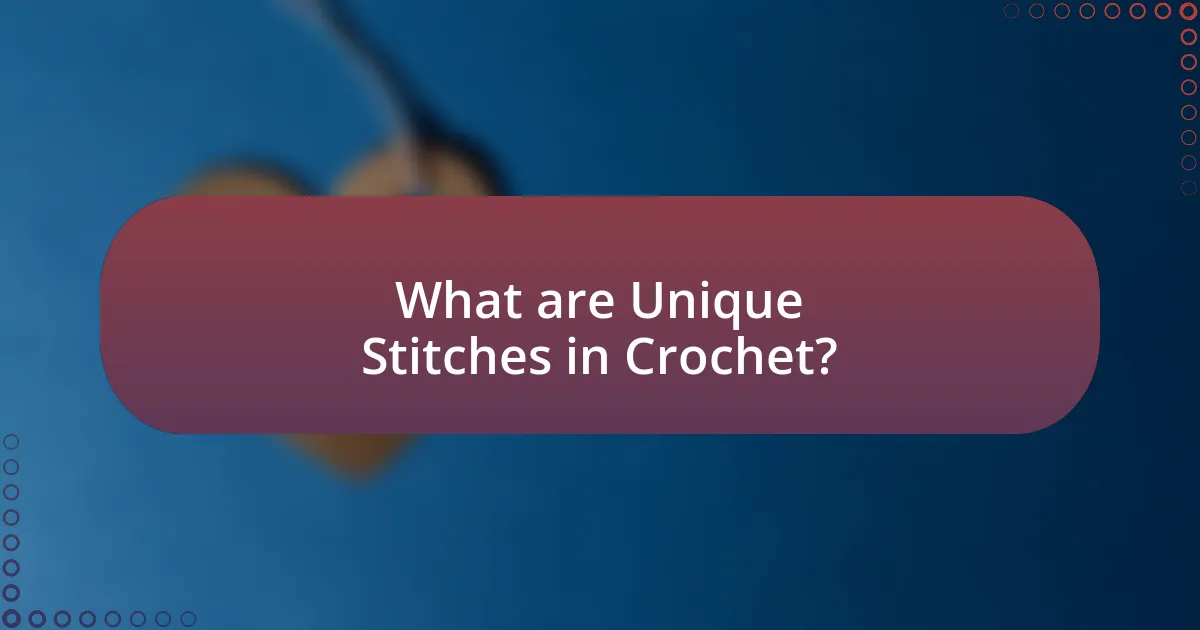
What are Unique Stitches in Crochet?
Unique stitches in crochet refer to specialized techniques that create distinct textures and patterns, setting them apart from standard stitches. These stitches, such as the popcorn stitch, shell stitch, and bobble stitch, enhance the visual appeal and complexity of crochet projects. Unique stitches often involve variations in the basic crochet stitches, allowing for creative expression and intricate designs. For example, the popcorn stitch consists of multiple double crochets worked into the same stitch, creating a raised, textured effect. This versatility in stitch design is a hallmark of crochet, enabling crafters to personalize their work and explore innovative patterns.
How do unique stitches enhance crochet projects?
Unique stitches enhance crochet projects by adding texture, visual interest, and complexity. These stitches allow crafters to create intricate patterns and designs that elevate the overall aesthetic of the piece. For example, the use of popcorn stitches can create a three-dimensional effect, while lace stitches can introduce delicate, airy qualities. The incorporation of unique stitches not only showcases the skill of the crocheter but also enables the creation of personalized and distinctive items, making each project unique.
What are some examples of unique crochet stitches?
Some examples of unique crochet stitches include the popcorn stitch, shell stitch, and broomstick lace. The popcorn stitch creates a textured, raised effect by grouping several double crochets together, while the shell stitch forms a fan-like shape with multiple stitches worked into the same space. Broomstick lace involves using a large knitting needle or broomstick to create loops that are then crocheted together, resulting in a delicate, airy fabric. These stitches are often used to add visual interest and complexity to crochet projects.
How can unique stitches be combined for creative effects?
Unique stitches can be combined for creative effects by layering different stitch types to create texture and visual interest. For example, combining a popcorn stitch with a shell stitch can produce a three-dimensional effect, enhancing the overall design. Additionally, alternating between solid and open stitches, such as using double crochet followed by chain spaces, can introduce contrast and depth in a project. This technique is supported by the fact that many crochet patterns utilize stitch combinations to achieve intricate designs, as seen in various crochet books and tutorials that emphasize the importance of stitch variety for artistic expression.
What techniques are used to create intricate crochet stitches?
Techniques used to create intricate crochet stitches include the use of advanced stitch combinations, such as shells, clusters, and popcorn stitches, as well as variations in yarn tension and hook size. These techniques allow for the development of complex patterns and textures. For example, the shell stitch involves creating multiple double crochets in the same stitch, resulting in a fan-like appearance, while popcorn stitches require the completion of several double crochets in one stitch, followed by pulling the last stitch through the first to create a raised effect. Mastery of these techniques enables crocheters to produce detailed and visually appealing designs.
What is the role of tension in achieving unique stitches?
Tension plays a critical role in achieving unique stitches in crochet by determining the tightness or looseness of the yarn as it is worked. Proper tension ensures that stitches are uniform in size, which is essential for creating intricate patterns and designs. When tension is consistent, it allows for the precise formation of unique stitch types, such as shells or popcorns, which rely on specific stitch counts and spacing. Inconsistent tension can lead to uneven stitches, affecting the overall appearance and texture of the finished piece. Therefore, mastering tension is fundamental for crocheters aiming to create distinctive and aesthetically pleasing designs.
How can stitch markers assist in complex stitch patterns?
Stitch markers assist in complex stitch patterns by providing clear visual indicators of specific points in the work, such as stitch counts or pattern repeats. These markers help crocheters maintain accuracy and consistency, reducing the likelihood of errors that can occur in intricate designs. For example, using stitch markers to denote the beginning of a round or to highlight where increases or decreases occur allows for easier tracking of the pattern’s structure. This method is particularly beneficial in patterns that involve multiple stitch types or changes in tension, as it enables the crocheter to focus on the technique without losing their place in the pattern.

What Patterns Can Be Created with Crochet?
Crochet can create a wide variety of patterns, including but not limited to granny squares, ripple patterns, lacework, and amigurumi. Each of these patterns utilizes different stitches and techniques, allowing for diverse textures and designs. For instance, granny squares are made using a combination of chain stitches and double crochet, while lacework often employs chains and single crochet to create intricate designs. The versatility of crochet patterns is evidenced by the numerous resources available, such as the “Crochet Pattern Book” by Linda P. Schapper, which showcases over 200 unique patterns and techniques.
How do crochet patterns differ in complexity?
Crochet patterns differ in complexity based on the number of stitches used, the variety of techniques involved, and the intricacy of the design. Simple patterns typically utilize basic stitches like single crochet and double crochet, while more complex patterns may incorporate advanced techniques such as colorwork, lace, or textured stitches. For example, a basic scarf pattern may only require single crochet, whereas a complex shawl pattern could involve multiple stitch types, shaping, and color changes. This variation in techniques and stitch combinations directly influences the skill level required and the time commitment needed to complete the project.
What are the characteristics of beginner-friendly patterns?
Beginner-friendly patterns are characterized by simplicity, clarity, and accessibility. These patterns typically use basic stitches, such as single crochet and double crochet, which are easy for novices to learn and execute. Additionally, they often feature straightforward instructions with minimal steps, allowing beginners to follow along without confusion. Visual aids, such as diagrams or photos, are commonly included to enhance understanding. Furthermore, beginner-friendly patterns usually require fewer materials and less intricate techniques, making them less overwhelming for those new to crochet.
How can advanced patterns challenge experienced crocheters?
Advanced patterns can challenge experienced crocheters by introducing complex stitch combinations, intricate designs, and unfamiliar techniques that require higher levels of skill and concentration. These patterns often demand precise tension and gauge, as well as the ability to interpret advanced symbols and instructions, which can lead to mistakes if not executed correctly. For instance, patterns that incorporate lacework or colorwork may require the crocheter to manage multiple yarns simultaneously, increasing the difficulty. Additionally, the need for problem-solving skills to troubleshoot errors in such patterns can further test an experienced crocheter’s abilities.
What resources are available for finding unique crochet patterns?
Online platforms such as Ravelry, Etsy, and Pinterest are excellent resources for finding unique crochet patterns. Ravelry hosts a vast database of user-generated patterns, allowing crafters to search by various criteria, including skill level and type of project. Etsy offers a marketplace for independent designers to sell their unique patterns, often featuring innovative designs not found elsewhere. Pinterest serves as a visual discovery tool, where users can find and save crochet patterns from various blogs and websites, making it easy to explore diverse styles and techniques. These platforms collectively provide a rich array of options for crocheters seeking distinctive patterns.
How can online communities enhance pattern discovery?
Online communities enhance pattern discovery by facilitating collaboration and sharing among crocheters, which leads to the exchange of diverse ideas and techniques. These platforms allow users to post their unique stitches and patterns, receive feedback, and adapt designs based on communal input. Research indicates that collaborative environments significantly boost creativity and innovation; for instance, a study published in the Journal of Creative Behavior found that group interactions can lead to a 30% increase in idea generation. Thus, the collective knowledge and experiences shared within online crochet communities directly contribute to the discovery of new patterns and techniques.
What role do crochet books and magazines play in pattern selection?
Crochet books and magazines serve as essential resources for pattern selection by providing a curated collection of designs, techniques, and inspiration for crocheters. These publications often feature a variety of patterns that cater to different skill levels, from beginners to advanced crafters, allowing users to choose projects that match their abilities and interests. Additionally, crochet books and magazines frequently include detailed instructions, illustrations, and tips that enhance the understanding of techniques, making it easier for individuals to successfully complete their chosen patterns. The diversity of styles and themes presented in these resources also encourages creativity and exploration within the craft, enabling crocheters to discover new stitches and project ideas that they may not encounter elsewhere.
What are some tips for mastering unique crochet stitches and patterns?
To master unique crochet stitches and patterns, practice consistently and focus on understanding the fundamentals of crochet techniques. Engaging with instructional videos and tutorials can enhance your learning, as visual aids often clarify complex stitches. Additionally, keeping a crochet journal to document your progress and stitch patterns can reinforce memory retention and skill development. Joining crochet communities, either online or in-person, allows for sharing tips and receiving feedback, which can further improve your technique. Research indicates that hands-on practice combined with community support significantly boosts skill acquisition in crafts like crochet.
How can practice and patience improve crochet skills?
Practice and patience significantly enhance crochet skills by allowing individuals to develop muscle memory and refine their techniques over time. Regular practice leads to increased familiarity with various stitches and patterns, enabling crocheters to execute them more efficiently and accurately. Patience is essential as it encourages learners to persist through challenges and mistakes, which are integral to the learning process. Research indicates that skill acquisition in crafts like crochet improves with deliberate practice, as noted in studies on motor skill development, where consistent engagement leads to mastery. Thus, the combination of practice and patience fosters both technical proficiency and creative confidence in crochet.
What common mistakes should be avoided when trying new stitches?
Common mistakes to avoid when trying new stitches include not reading the pattern thoroughly, which can lead to misinterpretation of instructions. Additionally, failing to practice tension control can result in uneven stitches, affecting the overall appearance of the project. Not using the appropriate yarn or hook size specified in the pattern can also lead to discrepancies in size and texture. Lastly, neglecting to keep track of stitch counts can cause errors that are difficult to correct later on. These mistakes can hinder the learning process and diminish the enjoyment of exploring new crochet techniques.
